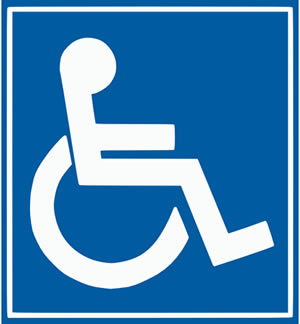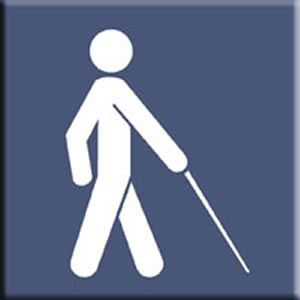Difference between Handicapped and Disabled Person
Key difference: The terms handicapped and disabled person are generally used interchangeably, but they differ in their real meaning. A ‘handicap person’ is an individual who has a physical or mental disability, whereas a ‘disabled person’ is a person with some disability which is generally determined by the physical, mental, or emotional impairment.
 Handicapped individuals are considered as disabled people. They are the ones who lack and have a defective functioning of any body part. Their body functions the same as that of the other individual, but lacks the functioning of that particular part. They refer to an individual who has some condition that markedly restricts their ability to function physically, mentally or socially. They are the ones who have some physical or mental disability, which may include both, the limited and the non-limited disabilities. These disabilities may result in the functions and limitations of an individual’s working and performance. The person who is handicapped has a limitation in the major life activities associated to that part. Majority of the physical disabilities which are highlighted in the societies are: handicapped by leg, hands, eyes, ears or mentally sick individuals. There are various rights and rules associated and conducted by the respective governments, which are practiced all over the world in order to socially treat every handicap individual equally. These people are privileged with many courageous awards and concessions in the society, in order to encourage them.
Handicapped individuals are considered as disabled people. They are the ones who lack and have a defective functioning of any body part. Their body functions the same as that of the other individual, but lacks the functioning of that particular part. They refer to an individual who has some condition that markedly restricts their ability to function physically, mentally or socially. They are the ones who have some physical or mental disability, which may include both, the limited and the non-limited disabilities. These disabilities may result in the functions and limitations of an individual’s working and performance. The person who is handicapped has a limitation in the major life activities associated to that part. Majority of the physical disabilities which are highlighted in the societies are: handicapped by leg, hands, eyes, ears or mentally sick individuals. There are various rights and rules associated and conducted by the respective governments, which are practiced all over the world in order to socially treat every handicap individual equally. These people are privileged with many courageous awards and concessions in the society, in order to encourage them.
 The Federal laws define a disable person as “any person who has a physical or mental impairment that substantially limits one or more major life activities and has a record of such impairment.” A disable person is an individual who is not able to perform the activities associated with the disabled part. Disability is not an attribute of an individual, but rather a complex collection of conditions, many of which are created by the social environment. People with disabilities have same health needs as that of the non-disabled ones; and also follow all the basic immunizations and other health precaution tips. Some research and evidence concludes that people with disabilities face barriers in accessing the health and rehabilitation services. Hence, inorder to overcome these issues, there are several services and rules for the disabled people in the societies. The organizations work collaboratively to solve these problems by raising many funds and rights to benefit and educate the disabled ones in the societies.
The Federal laws define a disable person as “any person who has a physical or mental impairment that substantially limits one or more major life activities and has a record of such impairment.” A disable person is an individual who is not able to perform the activities associated with the disabled part. Disability is not an attribute of an individual, but rather a complex collection of conditions, many of which are created by the social environment. People with disabilities have same health needs as that of the non-disabled ones; and also follow all the basic immunizations and other health precaution tips. Some research and evidence concludes that people with disabilities face barriers in accessing the health and rehabilitation services. Hence, inorder to overcome these issues, there are several services and rules for the disabled people in the societies. The organizations work collaboratively to solve these problems by raising many funds and rights to benefit and educate the disabled ones in the societies.
The handicapped person does not require to be disabled, especially when they can find a way over their disabilities.
Comparison between Handicapped and Disabled Person:
|
|
Handicapped |
Disabled Person |
|
According to World Health Organization |
"Loss or limitation of opportunities to take part in the life of the community on an equal level with others; encounter a person with disability and social, physical environment. Is an inability to accomplish something one might want to do." |
A disability is “any restriction or lack (resulting from any impairment) of ability to perform an activity in the manner or within the range considered normal for a human being.”
|
|
Terms |
The term emphasizes the focus on shortcomings in the environment and in many tasks and activities, for example. in education, occupation, information or communication (social dimension)." |
This term is caused due to the social and environmental problems, which may relate to their birth or without birth problems. |
|
They are |
A handicap is a physical or attitudinal constraint that is imposed upon a person, regardless of whether that person has a disability. |
A disability is a condition caused by an accident, trauma, genetics or disease which may limit a person’s mobility, hearing, vision, speech or mental function. |
|
Meaning |
Handicapped - Having a physical or mental disability that substantially limits activity. |
Disabled - Impaired, as in physical functioning. |
|
Refer |
It refers to conditions that leads to impairment of disability and prevent the person from doing things that other people of their age or gender would normally do. |
It is the restriction of lack of ability to perform certain function. |
|
The person are |
Here the person is completely unable to do something. |
Here the person is simply limited in doing something. |
|
For example |
A sixteen-year-old who is unable to prepare his own meal or care for his own toileting or hygiene needs is handicapped. |
A three-year-old child who is not able to walk has a disability because a normal three-year-old can walk independently. |
Image Courtesy: 4vector.com, jean-hewitt.co.uk









Add new comment